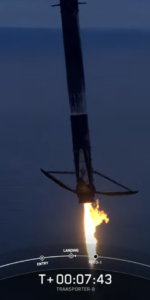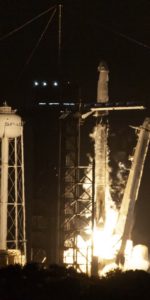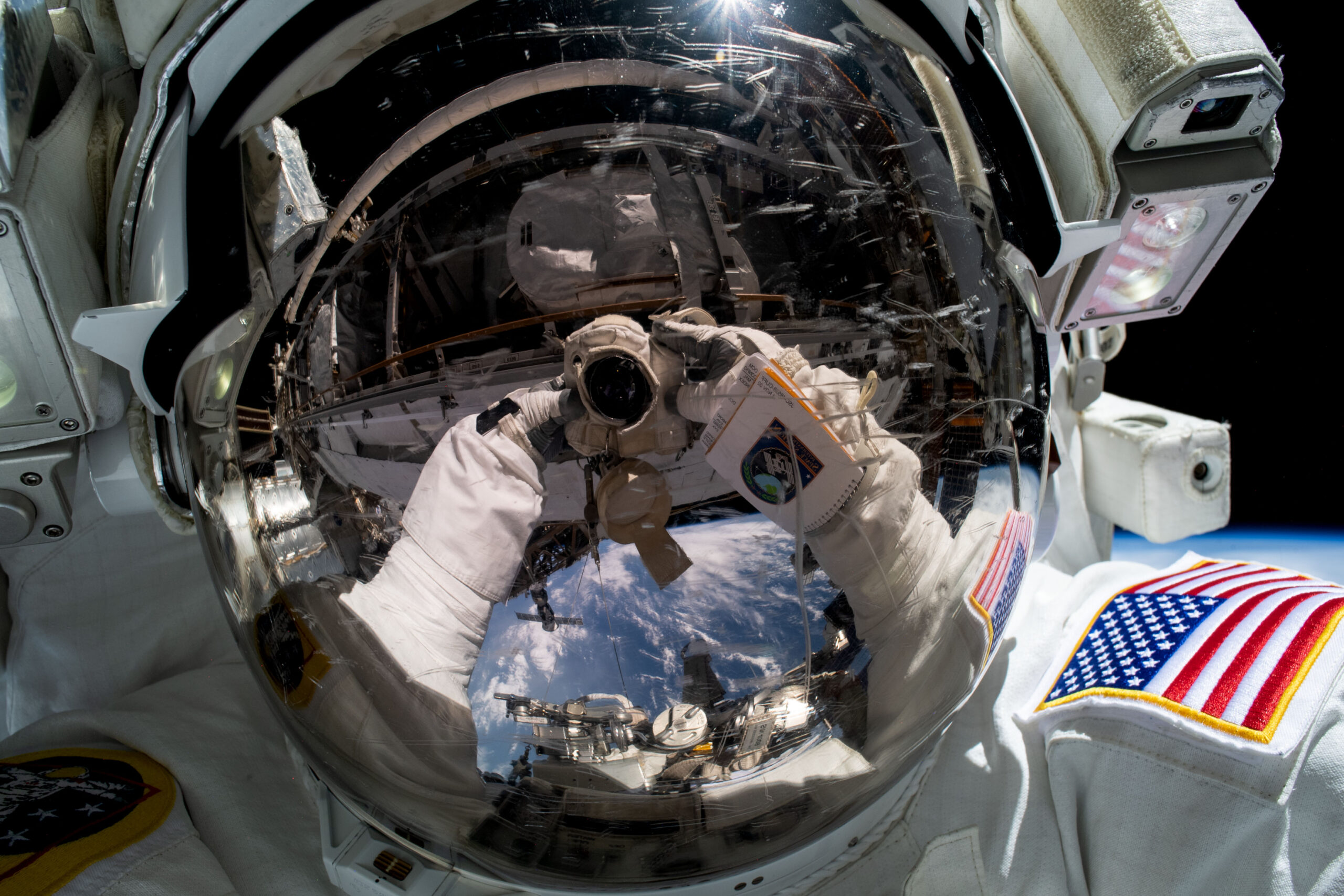
Expedition 69 spacewalkers Warren “Woody” Hoburg and Steve Bowen have wrapped up their second Extravehicular Activity (EVA) in under a week to install a third pair of Boeing-built solar arrays on the International Space Station (ISS). The two astronauts have now logged a combined 11 hours and 38 minutes outside the station, outfitting Power Channel 1A on the starboard-side S-4 truss and Power Channel 1B on the S-6 truss, with a fourth set of ISS Roll-Out Solar Arrays (iROSAs) scheduled to fly to the ISS in 2025.
In doing so, Bowen—who served as EV2 for today’s spacewalk, handing off EV1 duties to Hoburg—becomes only the fifth U.S. astronaut to log as many as ten EVAs, joining fellow spacewalking heavyweights Mike Lopez-Alegria and former NASA Chief Astronauts Peggy Whitson, Bob Behnken and Chris Cassidy. With the completion of today’s excursion, Bowen has attained a career total of 65 hours and 57 minutes.
That sets him in second place behind Lopez-Alegria on the list of America’s most experienced spacewalkers and third in the world. For his part, Hoburg has now logged 11 hours and 38 minutes of EVA time across the first pair of spacewalks of his career. Today’s EVA concluded after five hours and 35 minutes.
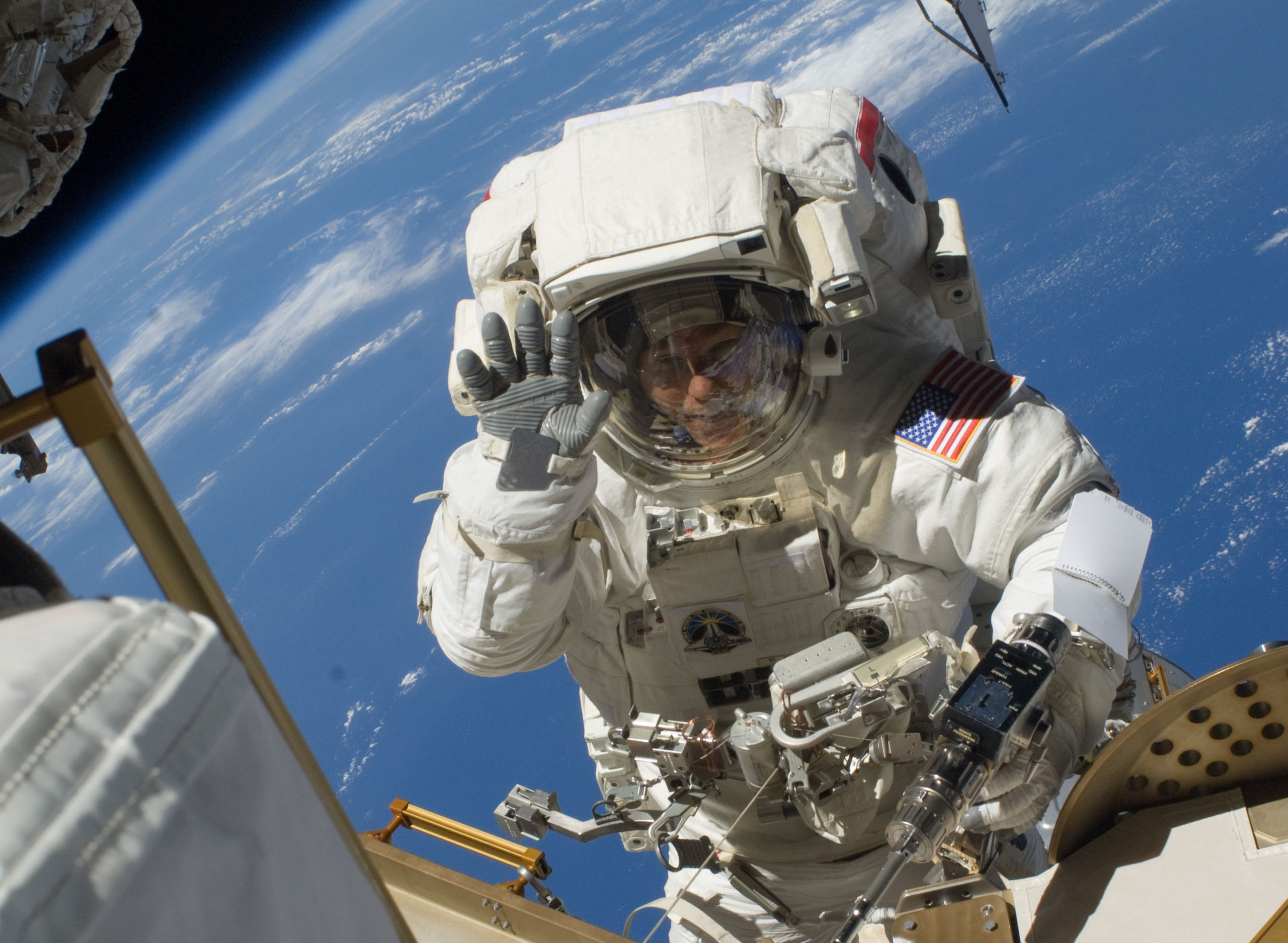
NASA and Boeing first announced plans to expand the power architecture of the U.S. Operational Segment (USOS) way back in January 2021, with an upgraded set of six electricity-generating solar arrays to be added to six of the station’s eight “legacy” Solar Array Wings (SAWs). This was expected to furnish a “hike” of power-generating capability of 20-30 percent—from 160 kilowatts to around 215 kilowatts—for the sprawling orbital complex, aiding future ISS expansion via the pressurized modules of AxiomSpace, Inc.’s planned Axiom Station and other customers’ burgeoning payload needs.
“When it comes to game-changing research and technological development, the Space Station is currently hitting its stride,” Boeing’s ISS Vice President and Program Manager John Mulholland remarked at the time of the iROSA announcement in early 2021. “These arrays, along with other recent upgrades to the station’s power system and data-transfer speed, will ensure that ISS remains an incubator and business model in the commercial space ecosystem for the coming decades.”
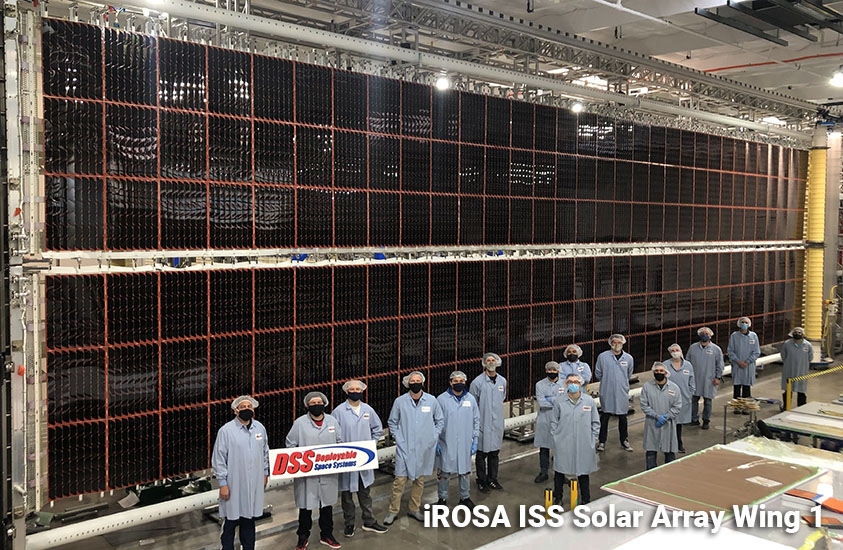
The ISS possesses eight massive truss segments—P-6 and P-4 on the “port” side of the Integrated Truss Structure (ITS) and S-6 and S-4 on the “starboard” side, together with adjunct structural members—which were launched and installed by successive Space Shuttle crews between November 2000 and March 2009. Each truss housed its own pair of giant SAWs, each measuring 112 feet (34 meters) in length and 39 feet (11.8 meters) in width, as well as power channels to contribute to the station’s requirement for electrical energy, power storage and distribution and cooling.
Within each truss, 12 nickel-hydrogen batteries stored and routed electrical power from the SAWs to feed on-board ISS systems. But early last decade, as those batteries neared the end of their functional lifetime, efforts got underway to replace them with new lithium-ion batteries, which are smaller, greatly exceed the storage capacity of their predecessors and can accommodate a larger number of charge/discharge cycles. Between January 2017 and July 2020, 11 U.S. EVAs totaling over 72 hours removed 48 aging nickel-hydrogen batteries from the four trusses and fitted 24 brand-new lithium-ion units in their stead.
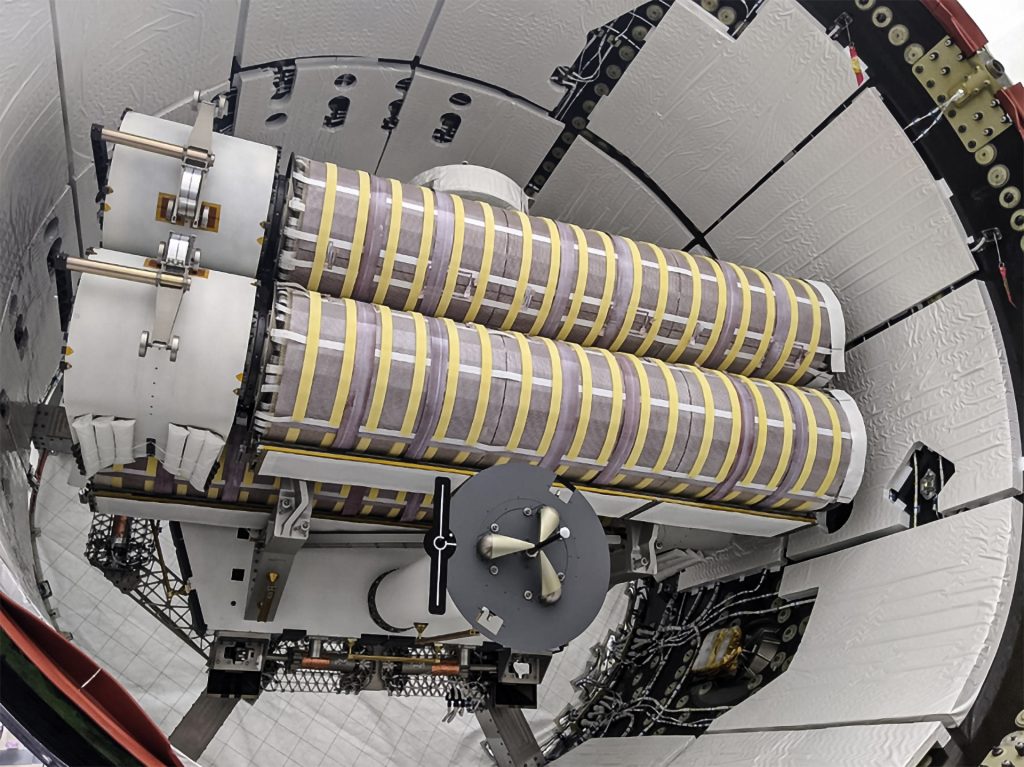
But although batteries and other components of the station’s power-generation infrastructure have been regularly upgraded over the years, little attention was paid to the physical SAWs themselves, all of whose hardware has been on-orbit for well in excess of a decade. Although the old arrays continued to perform well, they were beginning to exhibit signs of physical degradation and age-induced wear.
“To ensure a sufficient power supply is maintained for NASA’s exploration technology demonstrations for Artemis and beyond, as well as utilization and commercialization,” it was explained, “NASA will be augmenting six of the existing eight power channels of the space station with new solar arrays.” In June 2017, SpaceX’s CRS-11 Cargo Dragon tested a Roll-Out Solar Array (ROSA) at the station, the success of which enabled plans to go ahead to develop six iROSAs to augment the power system.
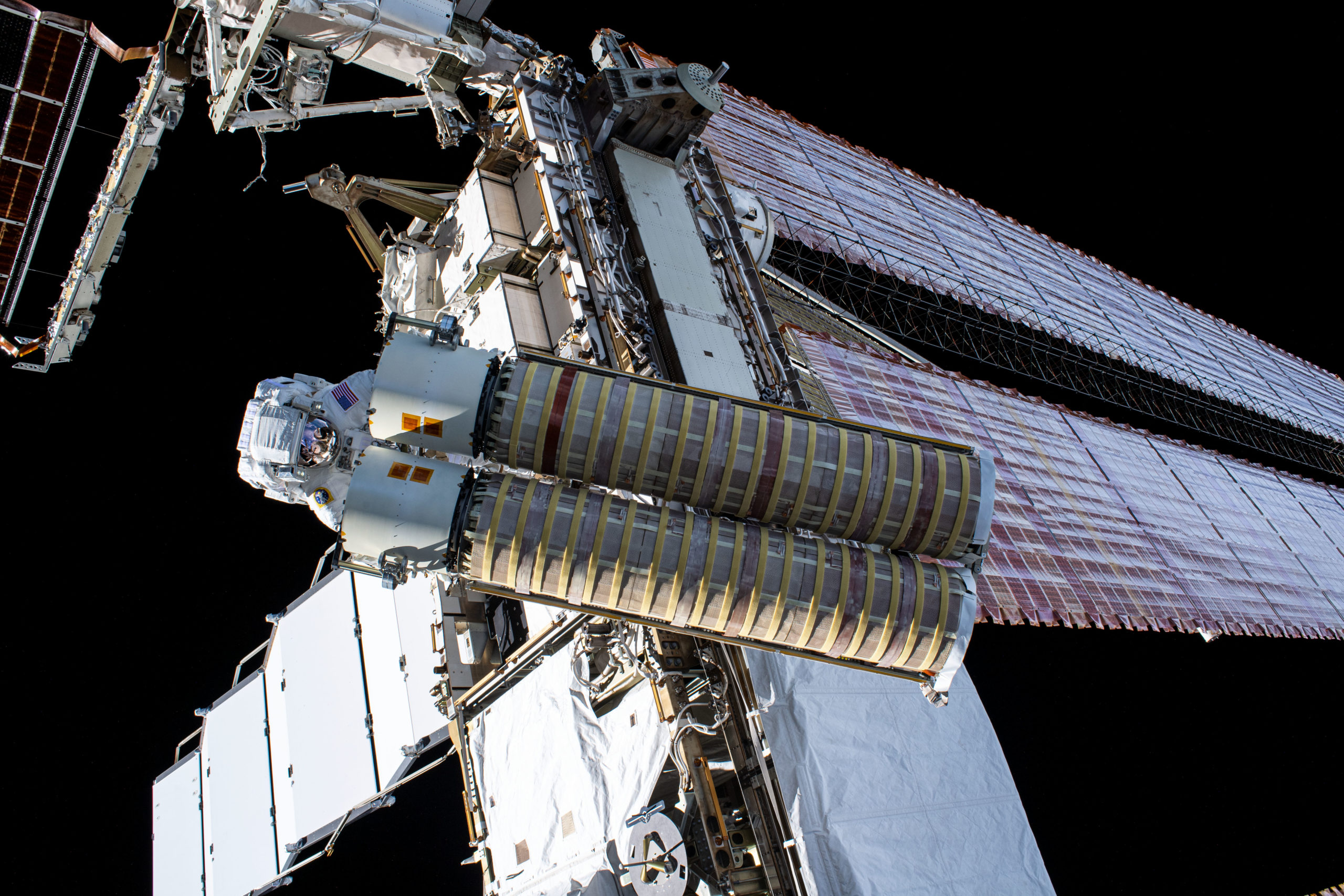
The new arrays, developed by ISS prime contractor Boeing, utilize high-efficiency XTJ Prime Space-Qualified Triple-Junction Solar Cell Arrays, with Deployable Space Systems (DSS) of Goleta, Calif., providing the housing canisters, frames and array “blankets”. But far from fully replacing the old SAWs, the new iROSAs—each of which measures 63 feet (19 meters) long and 20 feet (6 meters) wide when fully deployed—overlay and partly “shadow” them, electrically combining old and new to yield a power increase from about 160 kilowatts to some 215 kilowatts.
Between February 2021 and today, a total of 15 U.S. EVAs laid cables, assembled pyramidal “modification kits” and installed the three pairs of iROSA arrays onto the exterior of the ISS. All told, the EVAs involved 15 astronauts from the United States, France, Japan and the United Arab Emirates (UAE) and lasted a total of 102 hours and 21 minutes.
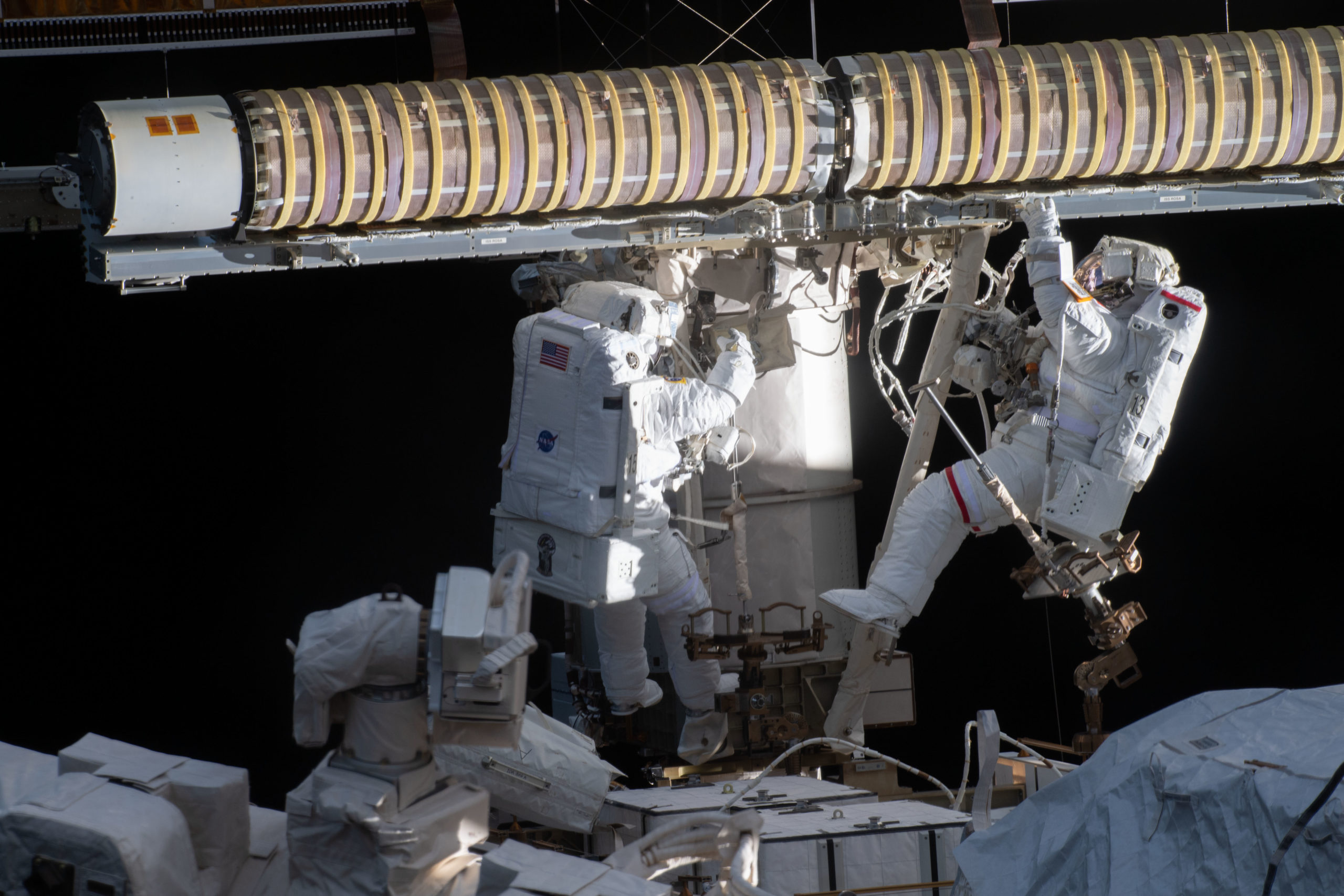
Work began in February-March 2021, when Expedition 64 spacewalkers Kate Rubins, Victor Glover and Soichi Noguchi executed a pair of EVAs to install modification kits on the P-6 truss. That enabled Expedition 65’s Shane Kimbrough and Thomas Pesquet to conduct three spacewalks in June 2021 to install iROSAs onto Power Channels 2B and 4B.
In September 2021, Pesquet and fellow Expedition 65 astronaut Aki Hoshide installed a modification kit for Power Channel 4A on the station’s P-4 truss. And in March of last year, Expedition 66’s Kayla Barron and Raja Chari did likewise for Power Channel 3A on the S-4 truss but plans to add additional iROSAs at these channels in the summer of 2022 were postponed, following an incident of water intrusion into a spacewalker’s helmet.
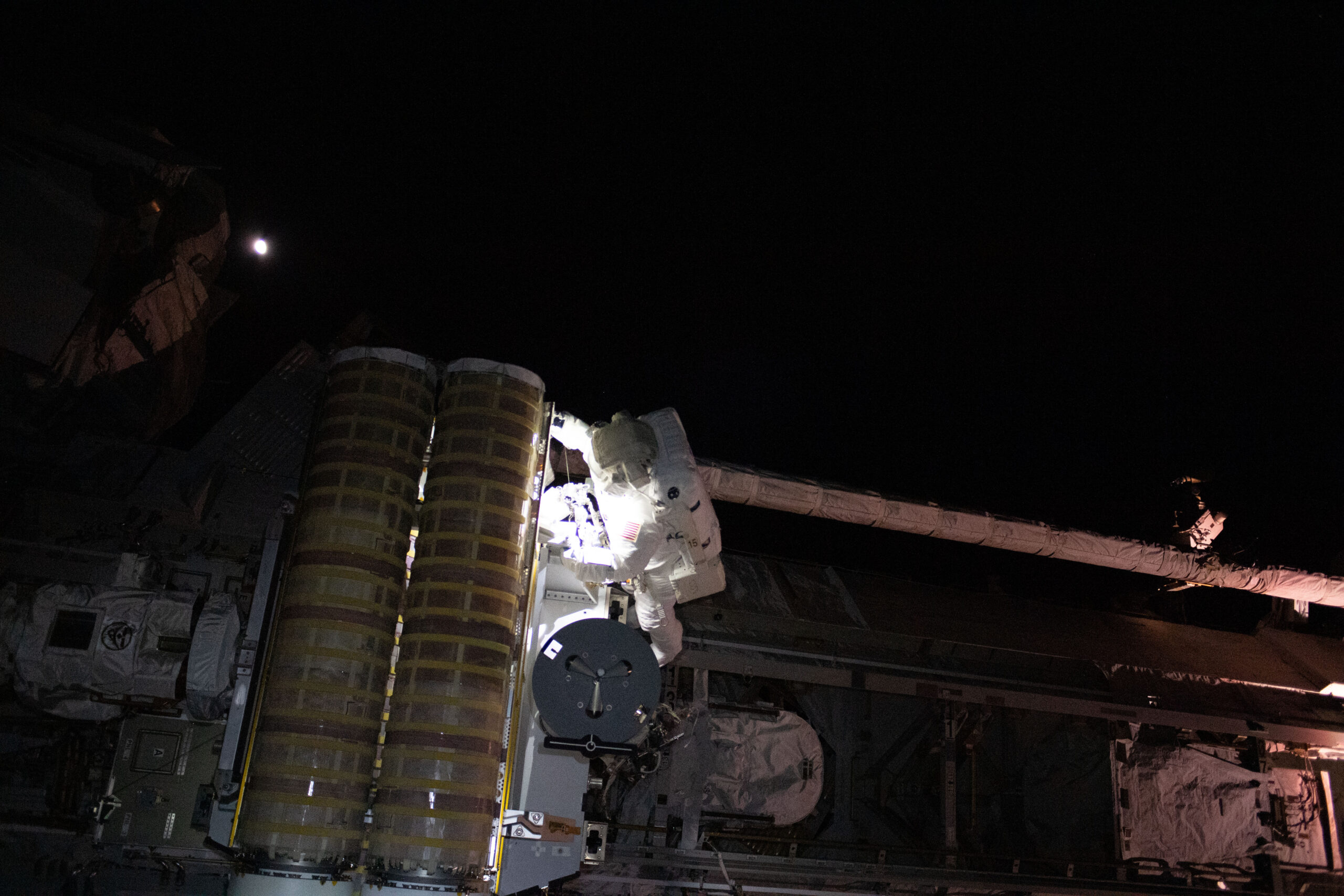
After lengthy analysis, last October NASA completed a Flight Readiness Review (FRR) and declared a “Go” status for the resumption of nominal EVA operations. And in mid-November, Expedition 68’s Josh Cassada and Frank Rubio installed another modification kit at Power Channel 1B on the S-6 truss.
A month later, the pair returned outside for two further EVAs to install the third and fourth iROSA arrays at the Power Channel 3A and 4A worksites. More recently, in January and February of this year, Expedition 68’s Koichi Wakata and Nicole Mann performed a pair of spacewalks to complete the addition of modification kits for the future upgrade of Power Channels 1B and 1A.
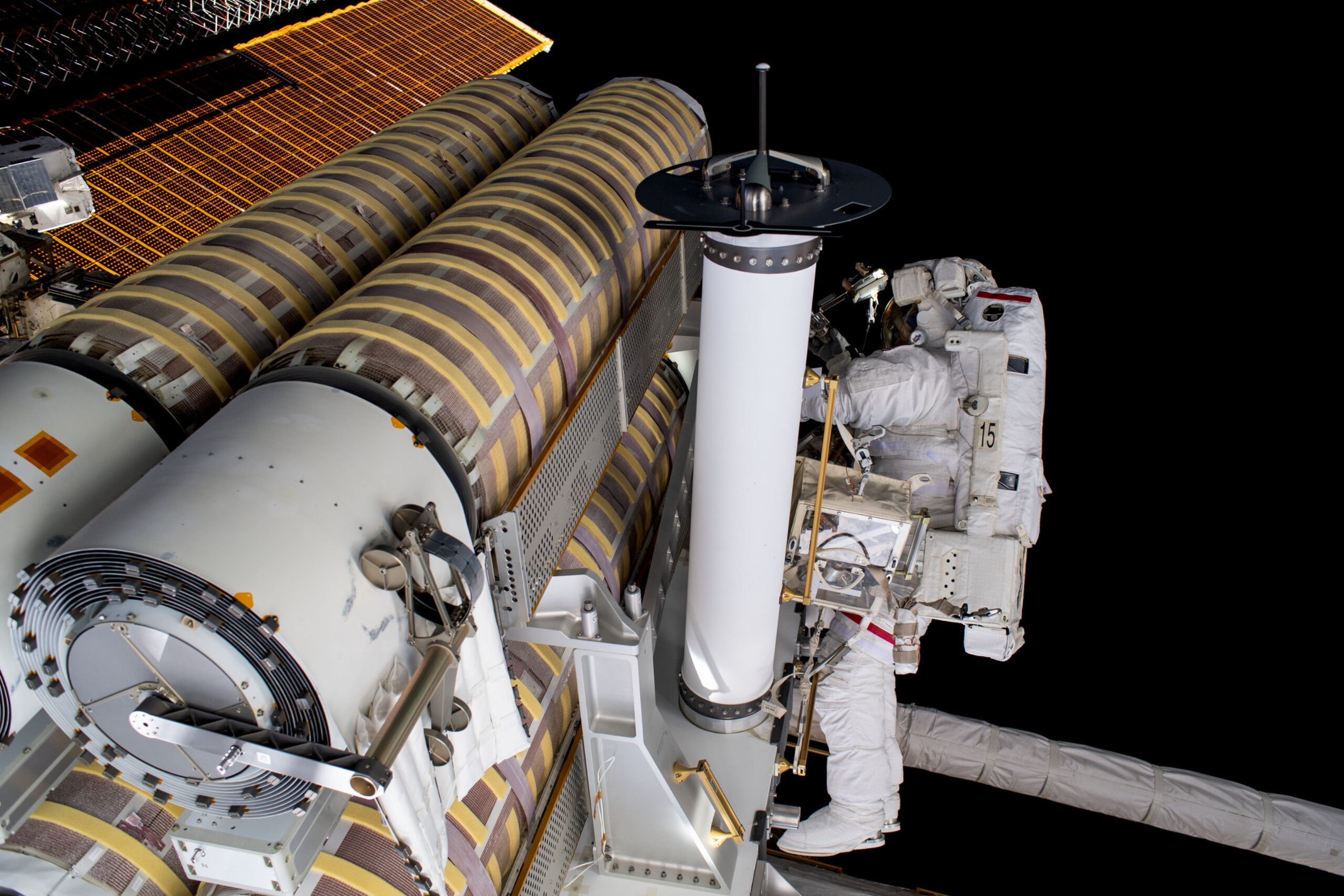
Original plans had identified six power channels—2B and 4B on the P-6 truss, 4A on the P-4 truss, 1A and 3A on the S-4 truss and 3B on the S-6 truss—which would derive the greatest benefit from having iROSA capability in place. Power Channels 2A on the P-4 truss and 1B on the S-6 truss were not initially earmarked for iROSA expansion.
However, last year NASA “re-evaluated power draws” on all channels and “reallocated the installation of iROSAs”. That led to a revised decision to leave 2A at the P-4 worksite and Power Channel 3B on the S-6 truss unmodified.
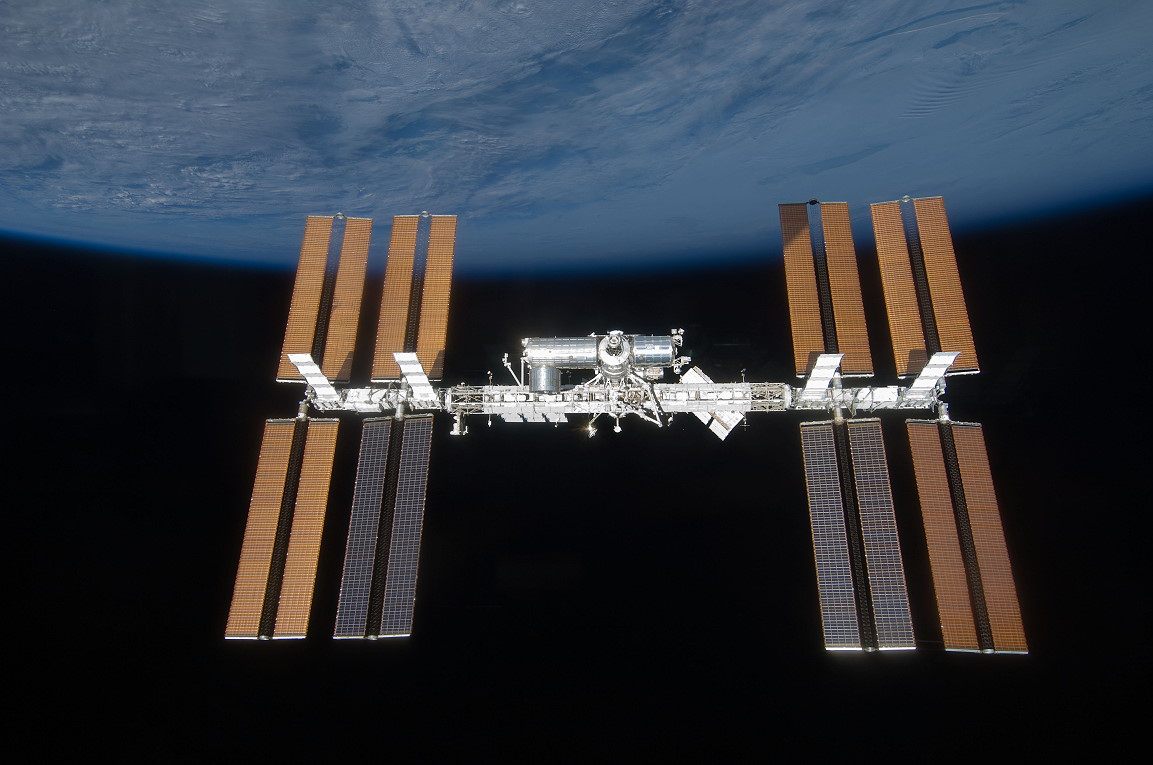
Circumstances have apparently now shifted, with an expectation that another pair of iROSAs will head uphill to the space station in 2025 to outfit the 2A and 3B locations. Modification kits will fly aboard Northrop Grumman Corp.’s Cygnus cargo ships, with the arrays themselves following on SpaceX Cargo Dragons. All told, with eight iROSAs fully functional, the ISS power grid will expand to around 230 kilowatts.
“NASA and Boeing have a plan in place for a fourth set of roll-out arrays to further augment the International Space Station’s power supply,” NASA’s Rob Navias told AmericaSpace. “These arrays, which would be the seventh and eighth to be installed on space station, are targeted to be delivered to the orbital outpost in the 2025 timeframe.”




